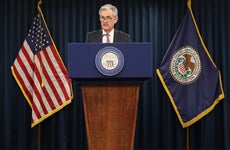Preview of the Fed meeting: 5 things borrowers and savers should watch for
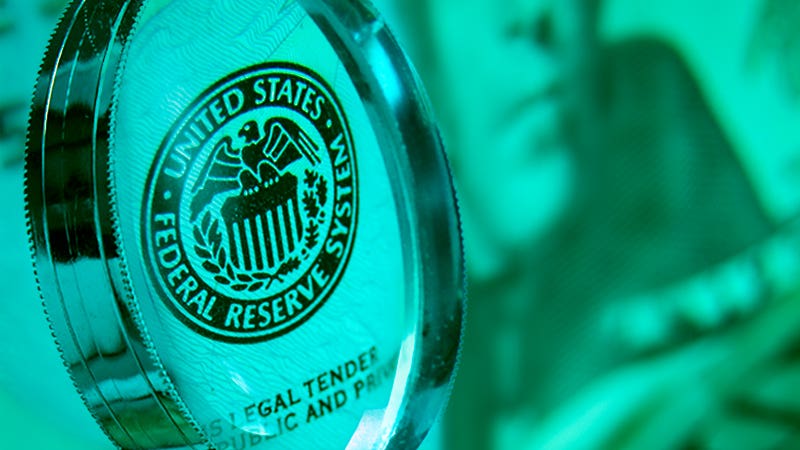
The Bankrate promise
At Bankrate we strive to help you make smarter financial decisions. While we adhere to strict , this post may contain references to products from our partners. Here's an explanation for .
The Federal Reserve’s watershed moment is long in the rearview mirror, but officials may soon face another pivotal point: What comes next, and is it time to take a victory lap?
Policymakers on the Federal Open Market Committee (FOMC) are gearing up for their first rate-setting meeting of the year, and they’re universally expected to leave the cost of borrowing money alone after cutting three times in 2019, one of the bumpiest years for policy in recent memory.
Armed with a new body of voters and a commitment to holding rates steady as the U.S. enters an election year, officials are convinced that borrowing costs are in a good place.
Last year’s stimulus has already boosted some parts of the economy. Housing starts in the U.S. are up nearly 34 percent since July, while stocks closed out 2019 at all-time highs. The geopolitical tensions seemingly keeping Fed officials awake at night have also seemed to subside with Washington and Beijing signing a “phase one” trade deal on Jan. 15.
But needless to say, uncertainty remains. Business investment is weak, and the manufacturing sector is in a slump. Job gains in the U.S. also slowed last year, while wage growth lost momentum. All of this suggests the need to keep up the yellow caution tape.
“At the top of the Federal Reserve building, the Fed has already dropped the ‘Mission Accomplished’ banner. They might want to think about retreating that,” says Lindsey Piegza, chief economist at Stifel. “They may have stabilized or even gotten ahead of potential contagions that they were fearing toward the middle of 2019 and end of last year, but there’s still a lot of weakness filtering out through the global economy that could very much impact our domestic economy.”
Here are five key themes for borrowers and savers to keep an eye on ahead of the Fed’s next meeting.
1. Expect rates to be left alone for now
If Fed Chairman Jerome Powell had a thesis for his December meeting press conference, it would likely be: “Both the economy and monetary policy right now are in a good place.” Basically, it means the chief U.S. central banker doesn’t see the need for a cut or a hike.
Other Fed officials are humming the same tune — even the ones who advocated against last year’s cuts. The Fed’s December dot plot showed that all but four officials expected to keep rates unchanged for the rest of 2020, showing increasing alignment.
Meanwhile, nothing would suggest that the U.S. economy is teetering toward recession, and inflation is still holding below the Fed’s 2 percent target. Powell said in December that the Fed would only get to hiking rates again once price pressures started sustainably reaching that threshold.
All of this has led most investors to believe that the Fed will still be on hold come Wednesday. Nearly 87 percent expect the Fed to hold the federal funds rate in its target range of 1.5 percent and 1.75 percent, according to CME Group’s FedWatch. Meanwhile, 13 percent are betting the Fed will hike rates by a quarter of a percentage point.
Though economic data drives the Fed’s interest rate decisions, experts keep an eye on the markets’ expectations. Research and history suggests that the Fed wants to avoid surprising investors, because dramatic swings could ultimately restrain growth and the economy.
“Since the Fed last met, they’re seeing much of the same: The expansion is rolling on, the labor market is robust, and inflation is still tepid,” says Michael Reynolds, investment strategy officer at Glenmede. “Inflation is really the name of the game for them, and they’re not raising rates until they see the whites of the eyes of inflation.”
[FED FORECAST: Experts say rates will stay put, but here’s what could shift policy]
2. How long will the Fed stay on the sidelines?
But the biggest challenge of being on the sidelines might just be knowing when to get back in the game.
Officials say they expect inflation to return to their 2 percent target. But for much of the expansion that hasn’t happened. At the same time, gross domestic product (GDP) — the broadest scorecard of the national economy — is expected to register at about 1.8 percent for the fourth quarter of 2019, according to the Atlanta Fed’s GDPNow tracker. Officials have a growth target of 2.2 percent for 2019, according to officials’ Summary of Economic Projections.
Powell could be asked to clarify whether the Fed remains data-dependent and is still tuned in to some of the longer-term challenges facing the broader outlook during his 2:30 p.m. press conference, a half hour after the Fed announces its interest rate decision.
“Monetary policy should not be on a predetermined pathway,” Piegza says. If the Fed fails to meet its inflation or growth target, “Does that mean that the Fed will still remain on the sidelines? I would hope that they’d be willing to be flexible, but in order for them to do that, they’d have to set the tone and reiterate that they’re on a data-dependent stance.”
That could look like a combination between the Fed’s December thesis, and it’s main message from June: The Fed is willing to “act as appropriate to sustain the expansion.” At the time, markets perceived the message to mean that rate cuts were getting the green light. But putting the phrase in this year’s context might just mean emphasizing that the Fed is willing to cut if necessary, Piegza says.
“Even if we don’t get a change in the statement, we need to have Powell really emphasize the data dependency underlying the Fed’s current policy characterization as being appropriate,” she says. “They don’t know; they don’t have a crystal ball. The language that, ‘We will continue to monitor the data and act as needed’ has been missing from the statement.”
3. Where does the Fed see risks to the economic outlook?
“Messaging is going to be important” this time around, Reynolds says. That means Fed watchers may also want to tune closely in to Powell’s assessment of the balance of risks.
Trade tensions seem to have calmed down in the near term, after the “phase one” deal was signed. It’ll be worth watching just how much that’s altered the outlook, says Greg McBride, CFA, Bankrate chief financial analyst.
“What’s the economic assessment, particularly in light of the phase one deal with China being signed?” McBride says. “Does that in any way change the Fed’s economic outlook? Does it change in any way what they’ve been hearing from businesses, particularly with regard to the hesitancy to invest?”
But trade still poses a downside risk. President Donald Trump may set his sights on the European Union (EU) rather than China this year, Reynolds says, and if he decides to move forward with threatened tariffs on EU autos, it could shave “as much as 25 basis points” off of growth.
“Just because the U.S. and China signed a phase one deal doesn’t mean trade is officially off the table,” Reynolds says.
Much of the negativity surrounding the trade war is still out there, despite the recent resolutions. Records of the Fed’s December meeting indicated that business sentiment was still downbeat and concerns about the trade war were still weighing on firms’ investment decisions.
Manufacturing activity in the U.S. slumped for a fifth straight month in December, according to the Institute for Supply Management’s purchasing manager index. The sector has been bearing the brunt of the geopolitical conflict.
“It’s a tale of two economies,” Piegza says. “On the one hand, you have a labor market that’s relatively strong and a consumer that is showing unexpected resilience. But then you have weak investment, weak manufacturing, deteriorating overseas conditions. If we don’t see any resilience from any key sectors of the economy, it’s going to be increasingly difficult for the consumer to be able to continue to shoulder the economy alone.”
4. Will the Fed keep pumping billions into the financial system?
Apart from the Fed’s rate decisions, another aspect of Fed operations has been taking the spotlight: cash injections.
A cash crunch occurred Sept. 16 in an obscure yet vital corner of the financial system known as the repurchase, or repo, market. Wall Street banks often swap collateral and loans on this market, and interest rates normally hold at a similar level as the federal funds rate. That didn’t happen, and short-term lending costs skyrocketed to as high as 10 percent, pushing the daily federal funds rate up along with it.
It caught the attention of the Fed, who just a few months earlier had been gradually shrinking its balance sheet. The turmoil made the Fed wonder if it hadn’t reduced its assets too much.
As a result, the Fed’s open market trading desk out of the regional reserve bank in New York started injecting hundreds of billions of dollars in cash to avoid a repeat of the volatility.
But that doesn’t mean it’s creating money, and it also doesn’t mean the operation is similar to the stimulative asset-purchasing program known as “quantitative easing.” Instead, the Fed is purchasing shorter-term Treasury bills at a pace of about $30 billion a day to build up reserves in the banking system. So far, it’s taken back in about half of the assets it originally sold off.
Officials have also tossed around the idea of creating a standing repo facility, which would be a permanent solution to the volatility. Creating that, however, would take some time.
Fed watchers will likely want to watch for any kind of clarity on the operations. Powell will likely get questions about it during the press conference.
“Here we are, almost February, and the program has no end date,” Piegza says. “We’d like to see some clarity in terms of timing and just how large we’re going to allow the Fed’s balance sheet to grow.”
5. Has the Fed done enough?
Fed watchers likely still have some lingering questions from the Fed’s major U-turn from last year, with the most pressing likely being: Did the rate cuts work? So far, most of that impact has been felt in the housing market, McBride says.
“It’s given a caffeine jolt to a housing market that has otherwise been sleepwalking through the economic recovery of the last decade,” McBride says. “Mortgage rates came down very dramatically, and they’re still very low, at sub-4 percent levels. We’ve seen a pickup in home sales and housing starts consistent with the decline in mortgage rates.”
Other geopolitical tensions such as trade, which pose a threat to the economy but aren’t controlled by Fed policy, are taking a “step in the right direction,” Piegza says. But any relief that’s had on business investment is yet to be seen, she says.
Stocks may be volatile in intraday trading, but they’re still flirting with all-time highs. A lot of that’s because of the Fed’s three recent rate cuts, as well as the Fed’s increased willingness to intervene and inject money into the financial system, McBride says.
That being said, storm clouds are still on the horizon. Investors may look for reassurance that the Fed is still being cautious, Piegza says.
“Investors are not going to be quite as complacent with monetary policy if all of a sudden the data starts to point to the downside and the Fed is still sitting on the sidelines,” she says. “While the confidence that the Fed is exuding may be comforting to investors, at this point it can quickly change after a month or two.”
What this means for you
Given just how much the Fed’s three rate cuts from 2019 have boosted the housing market, it might be a good time to consider refinancing your mortgage. Lower mortgage rates have been “a great opportunity for homeowners to refinance and cut monthly payments to create more room in their household budget,” McBride says.
But borrowers with high-cost debt won’t want to wait any longer. Now’s the time to prioritize paying off your high-cost debt, so you can use this low-rate period to your advantage. Shop around for 0 percent balance transfer offers or a lower fixed-rate personal loan.
“This is the year, if you’re struggling with debt, you’ve got to make some serious headway in paying it down,” McBride says. “Put yourself on a pathway to eliminating your high-cost debt and rightsizing your household budget, so you can put your dollars into saving for your future rather than paying for your past.”
From the savers’ point of view, you might not see much movement in yields, at least while the Fed is on hold. That doesn’t mean you should forgo saving altogether. It also doesn’t mean that the overall savings environment is bad for achieving your goals.
That’s of course dependent upon your annual percentage yield, or APY. The national average for a savings account is 0.1 percent. With that kind of return, you’d be effectively losing 2 percent every year in purchasing power, McBride says.
But in today’s environment, there’s a wide array of high-yield savings accounts, many of them at online banks offering yields near 2 percent. Amid low inflation — which has held near 1.7 percent over the past six months — you don’t have to worry about your money losing its purchasing power when you sock it away.
“There is still a tremendous opportunity for households to increase substantially their interest earnings on their savings,” McBride says. “It’s really imperative to put your money in an online savings account where you’ve got a shot at preserving your buying power and keeping pace with inflation.”
Inflation is “the wild card in 2020,” McBride says, who believes it could pick up in the later part of the year. But for the time being, it appears like low interest rates and a perpetually bloated balance sheet are here to stay.
“That’s the new normal,” McBride says. “Whereas a 4 percent fed funds rate used to be the norm and whereas a sub-trillion dollar Fed balance sheet used to be the norm, we’re not in Kansas anymore. This is an economy and a financial system that didn’t like when the Fed started pushing rates above 2 percent and when the balance sheet went below $4 trillion.”
Learn more:
Related Articles
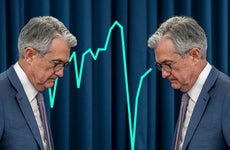
Preview of the Fed meeting: 4 big questions facing the Federal Reserve post-coronavirus
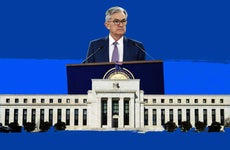
Preview of the Fed meeting: 6 pressing questions about the Fed’s next move in coronavirus battle
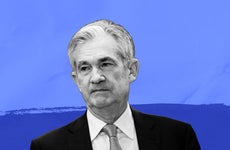
Preview of the December Fed meeting: 4 key themes for borrowers and savers
